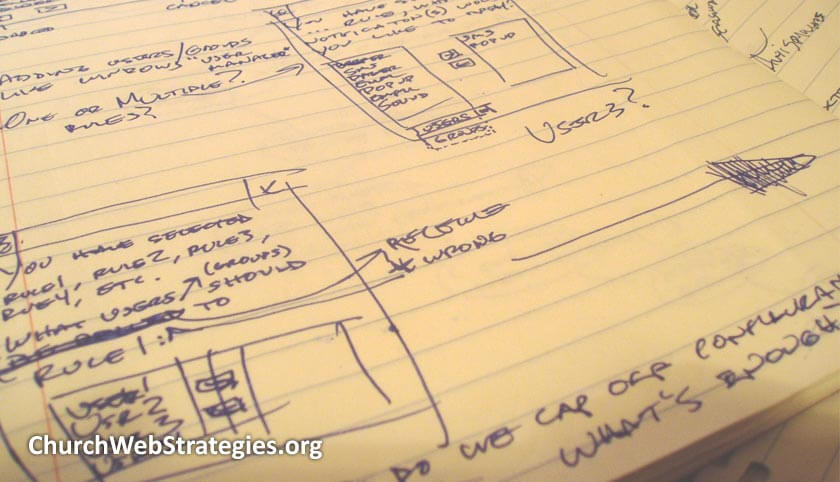Some projects dictate that you look at every detail. Are you building a house? You need to know where every light switch and electrical outlet will be. They may seem like trivial when figuring out the arrangements of the rooms, but it needs to happen. You may have a kitchen window that lets in the first rays of morning sunlight. Yet your toaster, blender, microwave, and mixer all share one outlet. Please realize that getting the big idea is the first step. Next is digging into the details that will make using your church website a truly pleasurable experience.
From day one I did not want this blog to be a technical “how to” guide for making websites. There are plenty of books and free content on building a WordPress site. I have seen books on Photoshop so big they could anchor a small boat. This blog would get lost in the noise of the Internet as so many others are publishing that content. Thus my focus is strategy and user experience. Yet I never wanted to skimp on digging into the details and execution.
There are many other websites and people writing about church communications. They all have strong points, and I encourage you to investigate as many as possible. They often get the big ideas and talk about the right topics. Yet when it comes to properly executing parts of a project, I have noticed gaps. For example, I have seen many helpful articles that include the step “identify your target market”. Unfortunately that is how deep they go. I am not saying they are wong and I am right, but I think you are doing yourself a disservice if you do not ask more questions.
Ask “How?”
I agree that you should identify your target market. But how? There should be references to several tools to accomplish this. I would suggest conducting stakeholder interviews and creating personas. Both will add accurate and valuable details to your target market data. Interview pastors, greeters, and ushers. They will tell you the biggest concerns of the congregation. Personas require research into church and local demographics. When you simply guess at your target market, you may miss the mark. Find the tools that replace guesses with real analysis and facts.
Ask “So what?”
Our time is far too precious to run down unproductive rabbit holes. You do not need to use every tip, trick, and tool on your website right now. There are only a few foundational tasks I would consider a “need” rather than a “nice to have”. A color psychology analysis of your website for foreign audiences is not important if you want to reach your local community. Yet it is a very interesting tool you can use. Ask yourself “So What?” after reading about a new tool or technique. If it does not help your most dire needs, then file it for later. The example of finding a target market is however, a foundational item. The answer to “So What?” is that your website will not resonate with your intended audience. Your pastor more than anyone should understand the importance of speaking the same language as your audience.
Action Item
In the past, I often had to put articles on hold because I would reference a particular tool or technique I had not yet addressed. I did not want to leave my audience asking the questions of “how?” and “so what” without a solid answer. There is a reason I have so many inline links on my site. I want to ensure you had all the tools required to accomplish the task. I do not claim to have all the answers. However, I implore you to always ask those important questions. Do this when reading any article. If they answer it, great. If not, keep digging. Refuse to accept vague statements full of buzzwords. Your website and the Gospel are too important!
Note: Fellow church website bloggers: please do not see this as a put down. I am still learning about user experience tools and practices. But the community needs to stop guessing and start analyzing.
Image courtesy of Mike Homme

